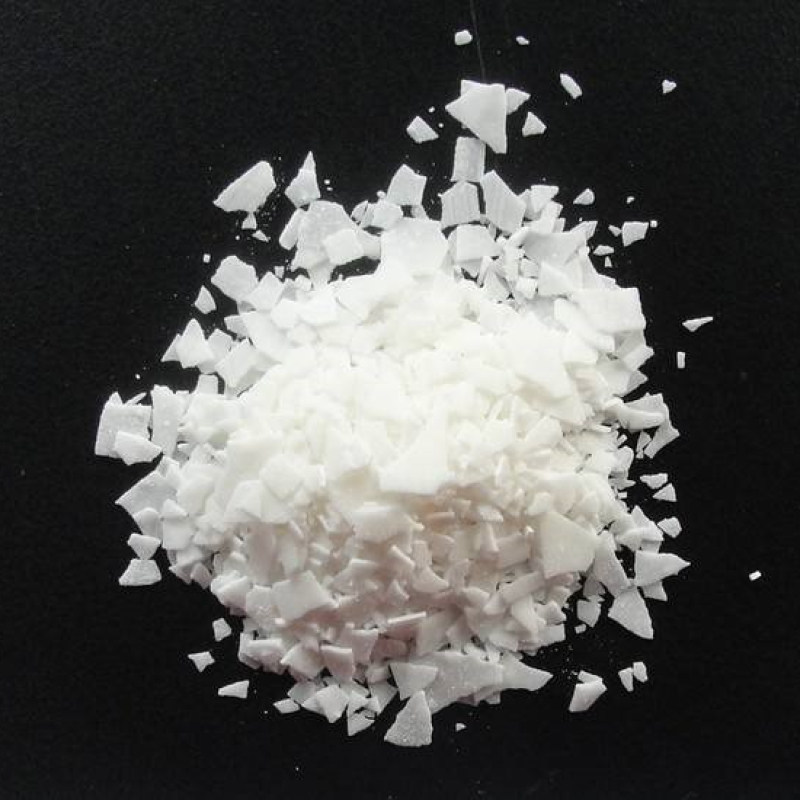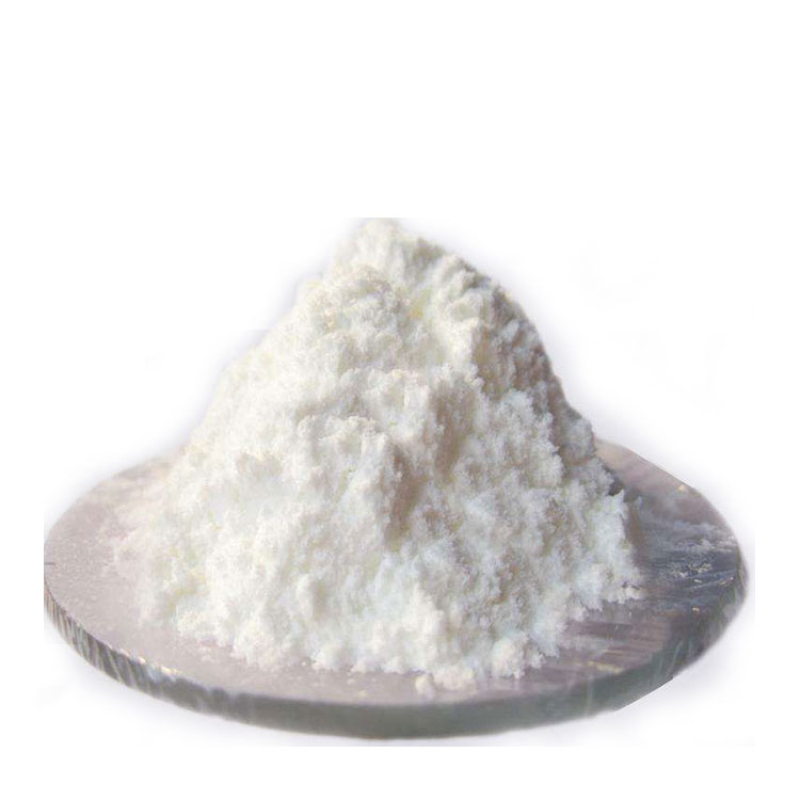Products Description of 4-Hydroxy-2-butanone CAS#590-90-94-Hydroxy-2-butanone is a component of bark beetle powder used to lure and kill bark beetles. It forms a complex with a Ziegler-Natta catalyst and is used as a catalyst for the stereospecific polymerization of butadiene and an organic synthesis intermediate.
Contact Now
Products Description of (-)-(R)-Mandelic Acid CAS#611-71-2D-mandelic acid is a polar molecule. Because it contains hydroxyl and carboxyl groups, the molecule has a certain degree of hydrophilicity. Since D-mandelic acid is a chiral molecule, its physical and chemical properties are affected by the stereostructure of its molecule. In addition, the acid-base properties of D-mandelic acid are also affected by the molecular structure.
Contact Now
Products Description of (R)-(-)-2-Methylpiperazine CAS#75336-86-6 White to light yellow crystalline solid.
Contact Now
Products Description of 2-Hydroxy-3-trifluoromethylpyridineCAS#22245-83-62-Hydroxy-3-trifluoromethylpyridine, as a pyridine derivative, plays an important intermediate role in the chemical industry, medical and pesticide fields, etc.2-Hydroxy-3-trifluoromethylpyridine Chemical PropertiesMelting point 150-153°CBoiling point 223.7±40.0 °C(Predicted)density 1.398±0.06 g/cm3(Predicted)storage temp. Inert atmosphere,Room Temperatureform powder to crystalpka9.67±0.10(Predicted)color White to Almost whiteInChIInChI=1S/C6H4F3NO/c7-6(8,9)4-2-1-3-10-5(4)11/h1-3H,(H,10,
Contact Now
Products Description of 2-Hydroxy-4-methylpyrimidine hydrochloride CAS#5348-51-62-Hydroxy-4-methylpyrimidine hydrochloride CAS No.
Contact Now
Products Description of 2-HYDROXY-3-METHYLPYRIDINE CAS#91914-04-4White powder2-HYDROXY-3-METHYLPYRIDINE Chemical PropertiesBoiling point 292.1±20.0 °C(Predicted)density 1.120±0.06 g/cm3(Predicted)storage temp. under inert gas (nitrogen or Argon) at 2-8°Cpka10.37±0.10(Predicted)CAS DataBase Reference91914-04-4(CAS DataBase Reference)Factory and Equipment ShowFast transport timeInventory 2-3 working days New manufacturing 7-10 working days
Contact Now
Products Description of AMBERLITE(R) IRA-400 (CL) CAS#9002-24-8717 Strong Base Anion Exchange Resin is a chemical substance.AMBERLITE(R) IRA-400 (CL) Chemical PropertiesWater Solubility Insoluble in water.Merck 14,382Safety InformationRisk Statements 36/37/38Safety Statements 26-36WGK Germany 3TSCA YesProduct Application of AMBERLITE(R) IRA-400 (CL) CAS#9002-24-8Used for softening water, preparing high-purity water, refining radioactive elements, extracting iodine from seaweed, refining antibiotics, industrial wastewater treatment, etc.Factory and Equipm
Contact Now
Products Description of ORALITH BRILLIANT PINK R CAS#2379-74-0Reduction of pink red R to thioindigo dyes is mainly achieved by oxidizing unsubstituted or substituted benzo[b]thiophene-3 or naphtho[2,3-b]thiophene using various oxidants such as bromine in a chlorosulfonic acid medium, polysulfides, oxygen in the presence of copper salts, etc.ORALITH BRILLIANT PINK R Chemical PropertiesBoiling point 529.1±50.0 °C(Predicted)density 1.583±0.06 g/cm3(Predicted)storage temp. Sealed in dry,Room Temperatureform SolidColour Index 73360color RedLogP2.06 at 22℃ and pH7E
Contact Now
Products Description of (R)-(-)-3-Carbamoymethyl-5-methylhexanoic acid CAS#181289-33-8(R)-(-)-3-(Carbamoylmethyl)-5-methylhexanoic acid is solid at room temperature and pressure, soluble in dimethyl sulfoxide, N,N-dimethylformamide and other organic solvents; it has poor solubility in ether solvents and can be used as an intermediate in chiral organic synthesis.
Contact Now
Products Description of AMBERLITE(R) XAD-4 CAS#37380-42-0Ion exchange resin is a kind of functional polymer that can exchange with ions of the same sign in aqueous solution. It is essentially a cross-linked polymer acid or polymer base. Phenolic cation exchange resin was first introduced in 1935, and industrial production began in Germany in 1939 and the United States in 1941. After World War II, polystyrene and polyacrylic acid ion exchange resins were put into production one after another. After the 1960s, macroporous ion exchange resins were developed.
Contact Now
Products Description of 3-Hydroxy-1-AdaMantane Carboxylic Acid CAS#42711-75-13-Hydroxyadamantane can be used to synthesize potent pyridineamide/sulfonamide inhibitors of 11β-HSD-1, which can be used to treat ulcers or hormone therapy related to cortisol3-Hydroxy-1-AdaMantane Carboxylic Acid Chemical PropertiesMelting point 203 °CBoiling point 357.2±25.0 °C(Predicted)density 1.419±0.06 g/cm3(Predicted)storage temp. Sealed in dry,Room Temperaturesolubility DMSO (Slightly), Methanol (Slightly)form Solidpka4.60±0.40(Predicted)color Off-WhiteInChIInChI=1S/C11
Contact Now
Zirconium, chloro glycine hydroxy aluminum complexes CAS#90604-80-1Factory and Equipment ShowFast delivery timeInventory 2-3 working days New production 7-10 working days
Contact Now
Products Description of CREMOPHOR (R) A25 CAS#68439-49-6CETETH25 is a nonionic emulsifier obtained by adding natural saturated fatty alcohol and ethylene oxide. CETETH25 (HLB15-17) is an oil-in-water (O/W) emulsifier. When used together with CETETH6, it forms a pair of complementary emulsifiers. The emulsifier pair has a small amount of use and a strong emulsification ability. The prepared emulsion products have high stability and bright appearance. It can tolerate a certain degree of inorganic salts and extreme pH conditions.
Contact Now
Products Description of Dinonylnaphthalenesulfonic acid CAS#25322-17-2Dinonylnaphthalenesulfonic acid is a chemical substance with the molecular formula C28H44O3S.Dinonylnaphthalenesulfonic acid Chemical PropertiesBoiling point 94-99 °Cdensity 0.852 g/mL at 25 °Crefractive index n20/D 1.465Fp 30 °Fstorage temp. 2-8°Csolubility H2O: insolubleCAS DataBase Reference25322-17-2(CAS DataBase Reference)EPA Substance Registry SystemNaphthalenesulfonic acid, dinonyl- (25322-17-2)Safety InformationHazard Codes F,Xn,NRisk Statements&nb
Contact Now
Products Description of 2-chlorobenzoic acid CAS#118-91-22-Chlorobenzoic acid, almost white coarse powder. The melting point is 142℃, and the density (20℃) is 1.5449/m3.
Contact Now
Products Description of 2-Thiophenecarboxylic acid CAS#527-72-02-Thiophenecarboxylic acid is a kind of colorless crystal.
Contact Now
Kojic acid CAS# 501-30-4Kojic acid (CAS# 501-30-4) is a natural compound produced by microbial fermentation and is commonly found in the metabolites of Aspergillus and penicillium fungi. The chemical name was 5-hydroxy-2-hydroxymethyl-4h-pyrano-4-one. The molecular form was ₆. H₆O₄, and the molecular weight was 142.11. Kojic acid has a certain acidity and is relatively stable in acidic and neutral environments.
Contact Now
Products Description of 2-Hydroxynicotinic acid CAS#609-71-22-Hydroxynicotinic acid is an organic intermediate.
Contact Now
Products Description of Methanedisulphonic acidCAS#503-40-2Methyl disulfonic acid is an important fine chemical product.
Contact Now
Products Description of 2-Ethoxybenzoic acid CAS#134-11-2Colorless oily liquid. Melting point 20.7℃, boiling point 174-176℃ (2.0kPa), relative density 1.105, refractive index 1.5400.
Contact Now
Products Description of 2-Acrylamide-2-methylpropanesulfonic acid CAS#15214-89-82-Acrylamido-2-methylpropanesulfonic acid (AMPS) is a water-soluble sulfonic acid group with strong anionic properties, which makes it salt-resistant, high-temperature-resistant, dye-affinity, conductive, ion-exchangeable and highly tolerant to divalent cations; the amide group makes it have good hydrolysis stability, acid and alkali resistance and thermal stability; and the active double bond makes it have addition polymerization properties, and it can produce copolymers with a variety of hydrocarbon monomers
Contact Now
Products Description of 4-(2-Tetrahydropyranyloxy)phenylboronic acid CAS#182281-01-2Phenylboric acid is a chemical substance with the chemical formula C11H15BO4.4-(2-Tetrahydropyranyloxy)phenylboronic acid Chemical PropertiesMelting point 117-124 °CBoiling point 411.3±55.0 °C(Predicted)density 1.21±0.1 g/cm3(Predicted)storage temp. Keep in dark place,Sealed in dry,Room Temperaturesolubility soluble in Methanolform powder to crystalpka8.63±0.16(Predicted)color White to Light yellowCAS DataBase Reference182281-01-2(CAS DataBase Reference)Safety Information
Contact Now
Products Description of 2,7-naphalenedisulfonic acid CAS#1655-35-2 Sodium 2,7-naphthalene disulfonate, white powder, is mainly used in organic synthesis and dye industry.2,7-Naphthalenedisulfonic acid disodium salt Chemical Propertiesform powder to crystalcolor White to Light yellow to Light orangeCAS DataBase Reference1655-35-2(CAS DataBase Reference)EPA Substance Registry System2,7-Naphthalenedisulfonic acid, disodium salt (1655-35-2)Safety InformationHazard Codes XiRisk Statements 36/37/38Safety Statements 37/39-26Hazard Note IrritantHS Code 2904
Contact Now
Products Description of [1,2,4]TRIAZOLO[1,5-A]PYRIMIDINE-2-CARBOXYLIC ACID CAS#202065-25-6[1,2,4]Triazolo[1,5-a]pyrimidine-2-carboxylic acid is a chemical.Molecular Formula is C6H4N4O2.[1,2,4]TRIAZOLO[1,5-A]PYRIMIDINE-2-CARBOXYLIC ACID Chemical Propertiesdensity 1.79±0.1 g/cm3(Predicted)form powderpka-4.67±0.41(Predicted)color CreamSafety InformationHazard Codes XiRisk Statements 43Safety Statements 36/37HazardClass IRRITANTHS Code 2933998090Product Application of [1,2,4]TRIAZOLO[1,5-A]PYRIMIDINE-2-CARBOXYLIC ACID CAS#202065-25-6[1,2,4]Triazolo
Contact Now

























![[1,2,4]TRIAZOLO[1,5-A]PYRIMIDINE-2-CARBOXYLIC ACID CAS#202065-25-6](https://sdluxicdn.huazhi.cloud/cdn/ff/oLGUsn18qGlr6xFpfvjw88ruuxs7GrtvunO9beYlPGM/1717583118/public/styles/chanpinzhutu/public/2024-06/photobank%20%282%29_1.jpg?itok=-1jJhH8M)








